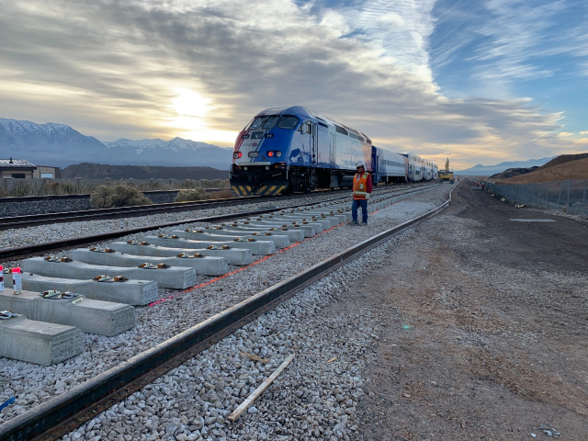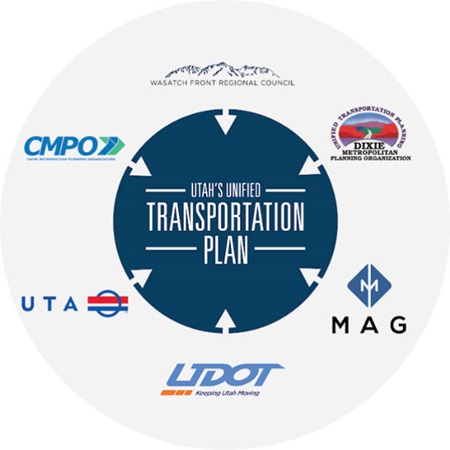2026 Budget Information
Please find below information for the 2026 UTA Budget, including a summary of the sources of UTA funding.
2026 Tentative Budget Document
2026 Tentative Budget Summary
Comment Online
Click here to comment on the UTA 2026 Tentative Budget.
Additional Ways To Comment
Click here to view the Notice of Public Hearing and Comment Period. This notice provides information on more ways to comment including email, mail, phone, and a public hearing on Thursday, October 30, 2025, at 5:00 p.m.
UTA Investment Sources
Transit funding is an investment in Utah’s quality of life and sustainable growth. The Utah Transit Authority, in partnership with the Utah Department of Transportation and Utah’s Metropolitan Planning Organizations, receives funds from many different sources to build and operate Utah’s integrated transit system throughout the Wasatch Front.
The chart below illustrates UTA funding sources by category:

* Total UTA Fund Balance use in 2026 is $73 million.
What is UTA's Investment Strategy?

Under the governance of the UTA Board of Trustees, UTA implements a long-term financial strategy dedicated to responsible, accountable stewardship of public funds. This strategy helps guide the UTA 30-year vision for transit service, which includes replacement and repair of infrastructure.
The annual UTA budget responds strategically to changing needs and emerging demand. UTA’s approach to transit investment allocates funds in the most strategic, efficient manner possible, recognizing the growing demand for transit service exceeds resources available.
How are Sales Taxes Invested in Transit?
Local sales tax revenue makes up just over half of UTA funding. The 6 counties in UTA’s service area have sales tax rates ranging from 6.65% to 7.25% (with a 7.75% rate in Salt Lake City). By state law, each municipality may allocate a percentage of sales tax for transportation purposes, including transit costs.
In the table* below, the blue highlighted cells show the maximum percentage the county may opt to allocate to UTA. The yellow highlighted column shows the actual percentage of sales tax revenue UTA received from each county in 2024.
UTA invests local sales tax revenue to fund local service goals, including infrastructure maintenance to support these goals.
Click table to enlarge

* Table current as of December 2025
What are Capital Sources of Funding?
Approximately one fourth of UTA funding is dedicated to capital costs. These costs include vehicles, rail and bus system expansion, and repair or replacement of transit infrastructure.
Sources of funding for capital costs include grants, leasing, bonds, and contributions from the state and from local partners.

What is the UTA Fund Balance?
The UTA Fund Balance is accumulated savings, which are accounted for and programmed for use in UTA long-term transit infrastructure projects and for expanding UTA service.
The use of these accumulated funds is included in UTA's long-term financial plan. Capital costs to expand, replace, or repair major assets such as rail, bridges, vehicles, stations, and crossings require a multi-year funding approach.
Why a Federal Preventive Maintenance Funding Source?
The federal government issues preventive maintenance grants to help transit agencies maintain their systems in optimal working order. By applying for and obtaining federal funds for this and other purposes, UTA can do more with state and local funding.
For example, UTA obtains federal grant funding that directly supports local providers of specialized transportation service, such as mobility programs for persons with disabilities. The work of these local providers complements and creates efficiencies for UTA Paratransit and microtransit services.
How do Utah's Metropolitan Planning Organizations Support Transit Investment?

The Wasatch Front Regional Council (WFRC) and Mountainland Association of Governments (MAG) are the regional planning organizations (officially referred to as Metropolitan Planning Organizations, or MPOs) with which UTA partners to obtain transit funding.
WFRC and MAG articulate, in partnership with UTA and UDOT, the multimodal transportation vision for UTA’s service area. The Utah Unified Transportation Plan is a prime example of this vision. For each community they represent, WFRC and MAG evaluate current transit service, forecast demand, identify available funding, and estimate additional funding needed to meet the needs of Utah’s growth. The resulting vision includes potential funding sources. UTA and its partners pursue this funding in alignment with UTA strategic priorities.
Where Can I Learn More?
For questions about UTA funding, contact the UTA Board of Trustees.
